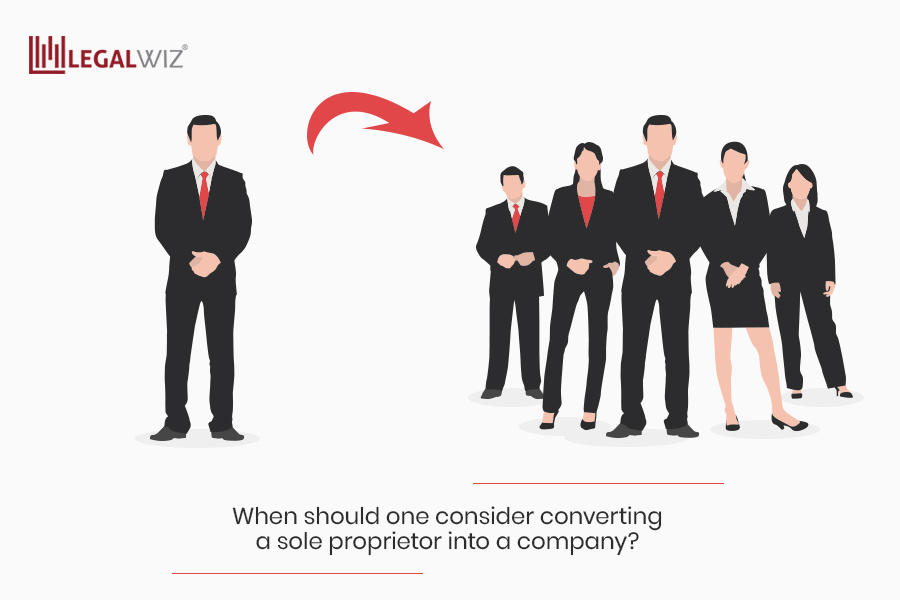Defining sole proprietorship
The majority of businesses initiate as a sole proprietorship in India. Sole means single, and proprietorship means ownership of the property or business. It is one of the simplest and straightforward forms of business structure because of its single or one owner trade trait.
One question that arises in a person’s mind is whether sole proprietorship applies to the person who possesses the business or whether a single person possesses a business. Hence, in this type of structure, the business does not have a separate existence from the owner. When an individual enters into a business as a sole proprietor, he owns all the business responsibilities and enjoys exclusive rights. The responsibility carries by him/her should be both such as financial and legal. Apart from that, as a sole trader, he/she is also under a few obligations. Therefore, he/she enjoys the entire profit incurred from the business, but with all such benefits, he/she might also be held personally liable for any business expenses. It becomes essential to register a proprietorship firm online before initiating your business in India.
Set up of a sole proprietorship.
The set-up of sole proprietorship is simple because it is the oldest form of business structure, and it requires no formal creation. Hence it comes with simple legal formalities and needs less paperwork. That’s why one can set it up by simply submitting it with the local office available in that particular city. The fees that have to be paid for licenses and permits are minimal as well. There is no need for any registration as a corporation or as any other form of business. A sole proprietorship can either be on the owner’s name or any fictitious name, but fictitious names might differ by state, as it’s just a trade name. Hence, there is no need for any separate trade name.
For example, a logistic sole proprietorship business named ABC logistics, where owner name is Anil, and he recruits an employee to provide services various states. Here, the trade name and owner name are both the same.
As a single owner, he owns all the assets of the business. Likewise, he is entitled to all profits incurred from that business. But with all these benefits, he will also bear the risk associated with the business. The principle behind it is that the law does not distinguish betwixt the owner and the business is a sole proprietorship. The owner is personally liable to all debts, unlimited liability, business losses due to which it is said to be the riskiest business out of all others.
Establishing a sole proprietorship.
It is the least expensive to establish. Consultants and experts consider taking this option for a start-up as a way to test their business before expanding and taking it to the next level. The one intends to take control of all management and make all decisions, then this type of business structure is suitable for them. They do not have to take approval from other members. It does not come under any scrutiny by any other member.
Decision-making and responses will be quicker as everything relies on a single owner who can deliver faster and more flexible management. There is no need to submit documents in government offices; one must only register the business at the local business office. For example, a local artist can also be a sole proprietor. The product he/she sells needs unique and intricate craftmanship that is not feasible to be imitated by machines. Thus, manufacturing such goods is not possible at a broad level and as a safer option as a craftsman is a sole proprietorship that is cost-effective and needs less formal procedural work.
Taxation in a sole proprietorship.
Tax procedure is straightforward as compared to others as owner and business both are a single entity. In this structure, the owner needs to file income tax return only once as an individual. Whatever income is earned by the business is equal to the income earned by the owner. That’s why the concept of double taxation does not apply here. Record keeping is also easy and straightforward as the owner does not need an accountant for any formal statements.
Once the owner determines to dissolve the business, then he/she might do so by paying off all his/her debts and closing up all the concerned accounts. Before that, a notification is needed to be sent to tax authorities regarding tax information about the business’s dissolution. It is simple because one does not have to go through a lengthy and formal process.
As a sole owner, one will not have any protection from liabilities since the financial and legal responsibilities as well as obligations concerning paying off business debts lies with him/her due to its single entity character and hence if one fails to pay off those debts incurred from business losses and unlimited liabilities arises. A creditor then might go after his/her personal properties and assets. The risk of losing is always linked with this structure, and the owner is personally liable for it.
